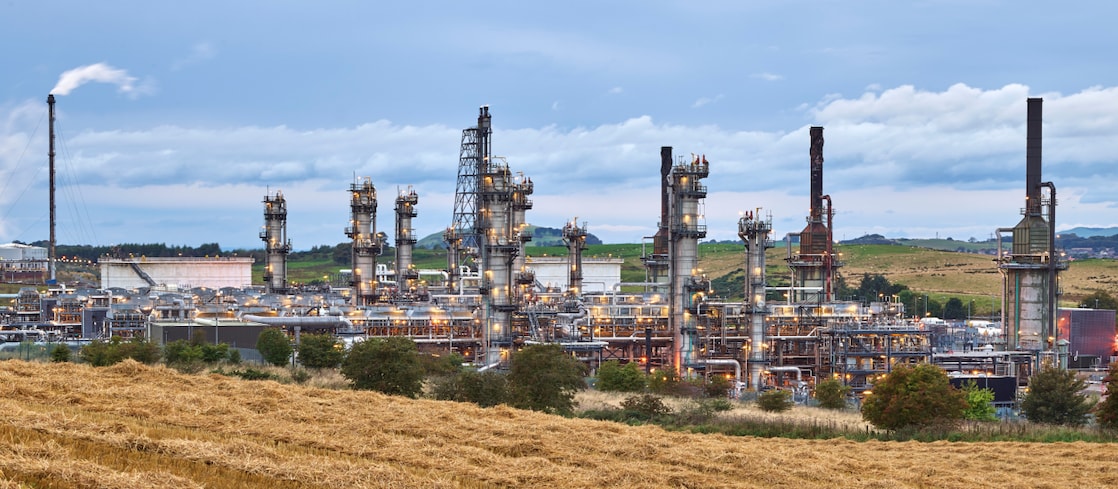
Pyrolysis Gasoline Processing
When treating highly reactive and potentially unstable pyrolysis gasoline streams, Ethylene producers must ensure their two-stage Pygas process employs an optimal catalyst solution to target the removal of unstable and undesirable compounds whilst also reducing production losses and mitigating pressure drop constraints.
Optimum Catalyst and Process Solutions
Shell Catalysts & Technologies offers a wide variety of catalysts for the hydrotreatment of pyrolysis gasoline (pygas) for both the 1st and 2nd stage process steps. Shell Catalysts & Technologies benefits from operating experience from Shell affiliate’s pygas units), design experience (from Shell’s hydrotreating licensing), reactor internal expertise as well as world-class modelling to become a leading provider in pygas processing solutions. These solutions address common issues experienced when operating pygas treatment systems, such as pressure drop mitigation, activity optimization, and aromatic saturation minimization. These high-performance catalysts have also proven extremely effective in Coke Oven Light Oil (COLO) hydrotreating services.
1ˢᵗ Stage Pygas Catalysts
Shell Catalysts & Technologies offers a full line of catalysts and grading products for 1st stage pygas reactors targeting the removal of diolefins, alkenyl aromatics (styrene) and some olefins for downstream processing. Shell Catalysts & Technologies’ portfolio includes both palladium and nickel catalysts, as well as specialized inert and active grading solutions.
2ⁿᵈ Stage Pygas Catalysts
Shell Catalysts & Technologies offers a full line of catalysts and grading for 2nd stage pygas reactors targeting sulfur and olefin removal. Shell Catalysts & Technologies’ portfolio includes both NiMo and CoMo catalysts as well as specialized inert and active grading.
Catalysts Designed to Add Value Downstream

Processing a pygas stream can be problematic owing to the reactive nature of the stream. Shell Catalysts & Technologies brings a proven history of developing high-quality pygas catalyst products, proprietary hardware solutions as well as licensed technology.
Our unique position as an owner and operator has given us the optimal vantage point of seeing these catalysts work in our own facilities. We’re taking that expertise and experience and delivering them to our clients so that they too can see the increased returns and maximised value of their own operations.
Pyrolysis Gasoline Frequently Asked Questions
This page aims to provide answers to some commonly asked questions about pyrolysis gasoline (pygas), including its uses, composition and the production process. It also explains the role of the catalyst system in optimising quality and yield, and why it is necessary to customise the catalyst system according to the unit’s mode of operation, unit constraints and operating objectives. Explore the world of pyrolysis gasoline processing and its significance in the petrochemical value chain.
What is pyrolysis gasoline used for?
What is pyrolysis gasoline used for?
Pyrolysis gasoline (pygas) is used as a valuable feedstock for petrochemical production and fuel blending. It contains many high-value components such as isoprene, benzene, toluene and xylenes, which are important building blocks that can be converted into many of the intermediates and polymers needed to produce an extensive range of everyday products.
What is pyrolysis gasoline made of?
What is pyrolysis gasoline made of?
Pyrolysis gasoline (pygas) is made of a wide range of components, including paraffins, olefins, diolefins, aromatics and styrenes. It can also include sulphur compounds and impurities such as silicon and arsenic. As this is the heavy C5+ stream from the ethylene cracker, the composition varies depending on the cracker’s feeds.
What is the process of pyrolysis gasoline?
What is the process of pyrolysis gasoline?
Pyrolysis gasoline (pygas) processing involves multiple steps, typically including distillation, selective hydrogenation, hydrotreating and extraction. A common approach involves a two-step hydrogenation process.
In the first step, the feed undergoes selective hydrogenation to remove diolefins, alkenylaromatics like styrene and some olefins. The second step focuses on the selective hydrogenation of remaining olefins and the removal of sulphur.
What is the catalyst for pyrolysis gasoline?
What is the catalyst for pyrolysis gasoline?
The specific choice of catalyst for processing pyrolysis gasoline (pygas) depends on numerous factors, including the unit’s operating severity and the feed. The first stage typically uses nickel-based or palladium-based catalysts, with inert and active grading. The second stage may use nickel–molybdenum (NiMo) or a NiMo + cobalt–molybdenum (CoMo) configuration to minimise aromatics losses and tackle silicon contaminants.

On-demand webinar: Pygas processing: Overcoming current and future challenges
Stream the webinar to hear a discussion on how to ensure unit effectiveness regardless of the chosen pyrolysis oil upgrading technology and reveal learnings from real-world case studies.

Improve pygas hydrogenation reliability
Pygas, a by-product of ethylene production, has limited commercial value in its raw form due to its high reactivity and low stability. However, it contains many high-value components such as isoprene, benzene, toluene and xylenes, which can be extracted through multiple processing arrangements. Download our white paper to learn how you can avoid production losses and additional operating and maintenance costs.

Hydrogenation Catalysts for Ethylene Producers
Selecting Shell Catalysts & Technologies’ C2 – C4/C5 hydrogenation catalyst solutions positions Ethylene producers to improve the elimination of contaminants poisonous to downstream units and the realisation of the total value to be derived from cracked olefin streams.

Shell Catalysts & Technologies’ hydrogenation and specialty catalysts
The hydrogenation catalyst business is geared to providing top-tier catalysts for selective hydrogenation of the various product cuts associated with a steam cracker. Specifically, the catalyst products focus on selectively treating C2, C3, C4 and pyrolysis gasoline (pygas, C5+) streams.